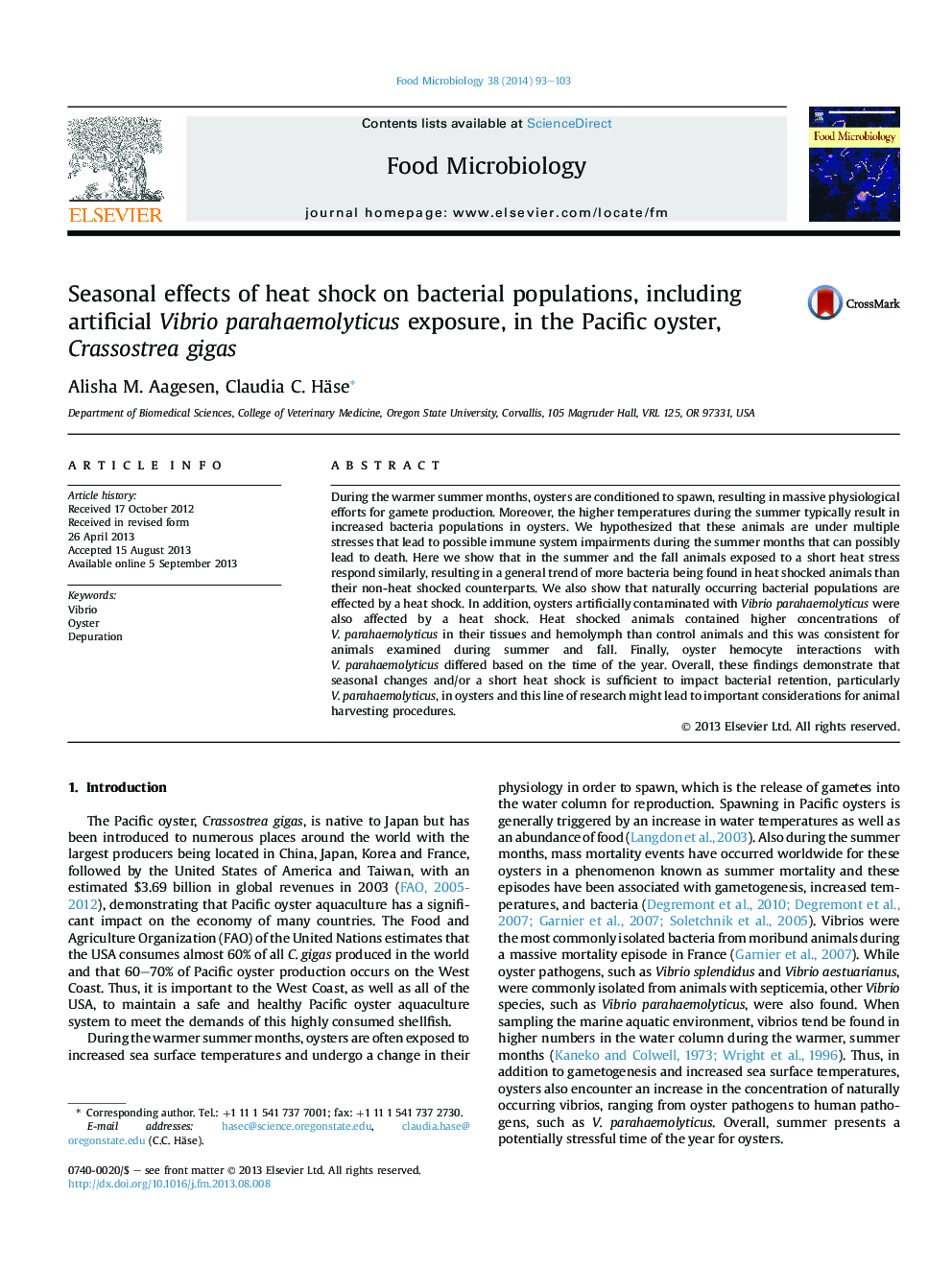| Article ID | Journal | Published Year | Pages | File Type |
|---|---|---|---|---|
| 4362924 | Food Microbiology | 2014 | 11 Pages |
•Stress has a negative effect on bacterial clearance during oyster depuration.•Natural bacterial populations in Pacific oysters are influenced by a heat shock.•Heat shocked oysters maintain higher levels of Vibrio parahaemolyticus than not heat shocked animals.•Seasonality influences the heat shock affects of bacterial populations in oysters.•Oyster hemocyte killing of V. parahaemolyticus is reduced by heat shock.
During the warmer summer months, oysters are conditioned to spawn, resulting in massive physiological efforts for gamete production. Moreover, the higher temperatures during the summer typically result in increased bacteria populations in oysters. We hypothesized that these animals are under multiple stresses that lead to possible immune system impairments during the summer months that can possibly lead to death. Here we show that in the summer and the fall animals exposed to a short heat stress respond similarly, resulting in a general trend of more bacteria being found in heat shocked animals than their non-heat shocked counterparts. We also show that naturally occurring bacterial populations are effected by a heat shock. In addition, oysters artificially contaminated with Vibrio parahaemolyticus were also affected by a heat shock. Heat shocked animals contained higher concentrations of V. parahaemolyticus in their tissues and hemolymph than control animals and this was consistent for animals examined during summer and fall. Finally, oyster hemocyte interactions with V. parahaemolyticus differed based on the time of the year. Overall, these findings demonstrate that seasonal changes and/or a short heat shock is sufficient to impact bacterial retention, particularly V. parahaemolyticus, in oysters and this line of research might lead to important considerations for animal harvesting procedures.
